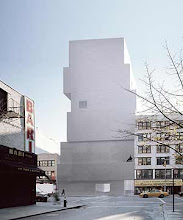Hollander identifies the room as “defined, rather than impinged upon, by enclosure.” [4] He then asserts that the blankness of Hopper’s rooms encapsulates them as the place of his subjects - of human beings. Hollander is concerned with the metaphors of Hopper’s “scenes of openness and closure, of emptiness and possibility, of minimal occupancy and uncontested possession of place.” [5]
 Hopper’s painting - Room in New York, 1932: The closeness of the two figures is said portray their heightened isolation and their absorption in their own private worlds. The painting has been likened to Camus’s image o f the Absurd where the “talking figure [is] seen through the glass door of a telephone booth, so that the movements of his mouth and his gestures appear meaningless. ” [6]
Hopper’s painting - Room in New York, 1932: The closeness of the two figures is said portray their heightened isolation and their absorption in their own private worlds. The painting has been likened to Camus’s image o f the Absurd where the “talking figure [is] seen through the glass door of a telephone booth, so that the movements of his mouth and his gestures appear meaningless. ” [6]
I have chosen the painting Eleven a.m. I am interested in the story of the undressed woman in the morning sunlight. She wears only shoes, which dramatise her nudity. In addition to the enclosure of the room, Fryd discusses her inward turned pose and her clasped hands – ways of embodying enclosure. The question Fryd raises is about her role – that she is gazing out of the window naked in the late morning, which “increases our unease over her sexuality and our voyeurism, and establishes reasons for her containment. She is a threat to herself, the artist, and to us, the viewer.” [7] There is a strong story in the room that I need to decipher.
Endnotes:





No comments:
Post a Comment